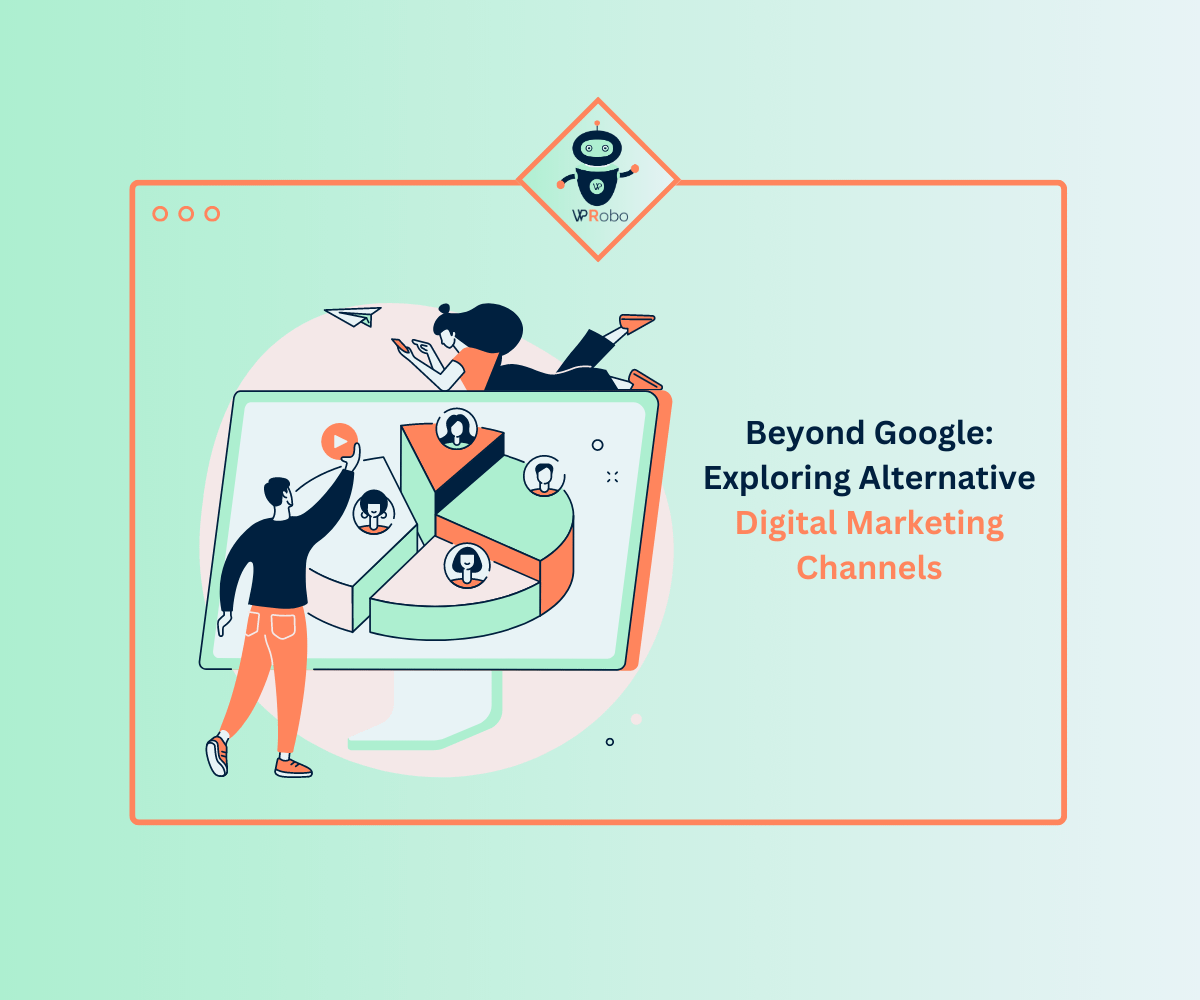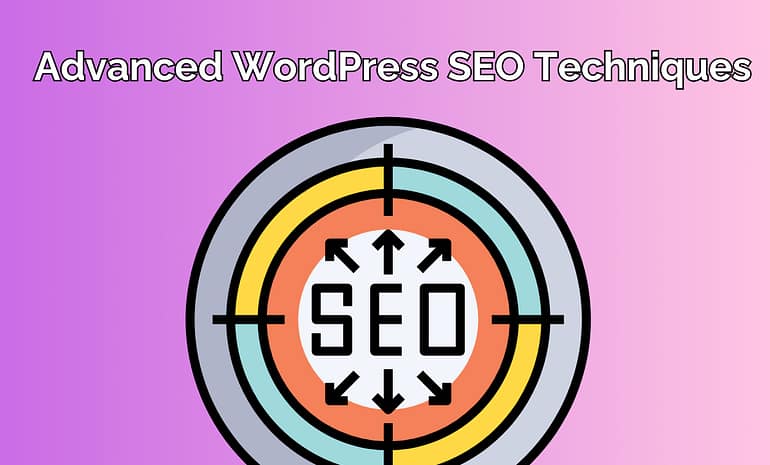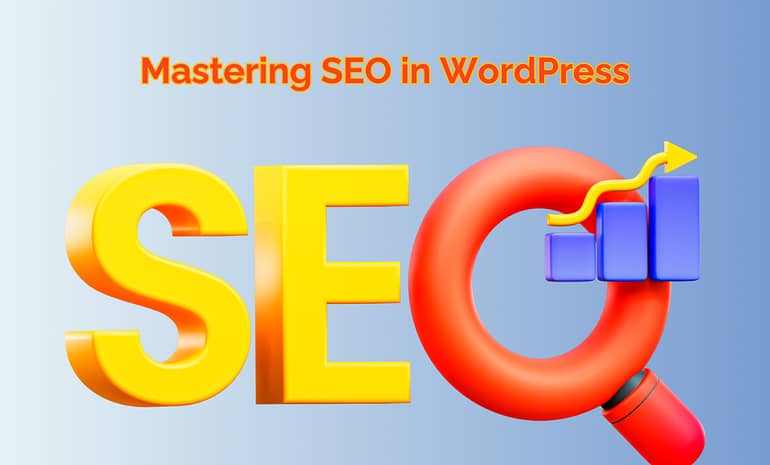Beyond Google, Exploring Alternative Digital Marketing Channels In the fast-paced and ever-evolving world of digital marketing, businesses face the challenge of standing out in a sea of online competition. While Google has long been regarded as the go-to platform for digital advertising and search engine optimization, relying solely on this tech giant may limit a company’s marketing potential. In order to maximize reach and engage with target audiences, businesses must explore alternative digital marketing channels that offer unique opportunities and untapped potential.
Beyond Google, Exploring Alternative Digital Marketing Channels
In the fast-paced and ever-evolving world of digital marketing, businesses face the challenge of standing out in a sea of online competition. While Google has long been regarded as the go-to platform for digital advertising and search engine optimization, relying solely on this tech giant may limit a company’s marketing potential. In order to maximize reach and engage with target audiences, businesses must explore alternative digital marketing channels that offer unique opportunities and untapped potential.

This article delves into the realm of alternative digital marketing channels beyond Google, unveiling a landscape brimming with possibilities. By diversifying their strategies and embracing platforms such as social media, influencer marketing, video content platforms, content marketing and blogging, email marketing, podcasting, and native advertising, businesses can unlock new avenues for growth, visibility, and customer engagement.
In the following sections, we will explore these alternative channels in detail, providing insights into their advantages, strategies, and best practices. By expanding their digital marketing horizons beyond Google’s dominion, businesses can carve a niche for themselves, capture the attention of their target audience, and flourish in the dynamic digital marketplace.

Social Media platforms:
Social media platforms have revolutionized how companies interact with their target market. Each platform offers unique features and demographics, allowing marketers to tailor their strategies accordingly:
- Facebook: With over 2.8 billion monthly active users, Facebook provides extensive targeting options based on demographics, interests, and behaviors. Marketers can create engaging posts, run targeted ads, and build communities through Facebook groups.
- Instagram: Known for its visual appeal, Instagram boasts more than 1 billion monthly active users. It is particularly popular in the fashion, beauty, travel, and food industries. Marketers can leverage visually striking content, use influencers for brand collaborations, and use features like Stories and IGTV.
- Twitter: Twitter is a real-time platform where businesses can engage with their audience through short messages, known as tweets. It is ideal for quick updates, customer service, and participating in trending conversations. Hashtags, retweets, and direct engagement help businesses reach a wider audience.
- LinkedIn: LinkedIn is a professional networking platform focusing on business-related content. It provides opportunities for B2B marketing, job postings, thought leadership, and networking. Marketers can target professionals based on industry, job title, company size, etc.
- Pinterest: It is a visual discovery platform allowing users to discover and save ideas. It is particularly effective for industries such as fashion, home decor, recipes, and DIY projects. Marketers can create visually appealing pins, utilize Pinterest ads, and drive website traffic.
Influencer Marketing:
Influencer marketing involves partnering with individuals with a significant following and influence within a specific niche. Here’s a deeper look at the different aspects of influencer marketing:
- Identifying Influencers: Businesses must identify relevant influencers who align with their brand values and target audience. Tools like Social Blade, BuzzSumo, and Influencer Marketing Platforms can help find the right influencers based on follower count, engagement rate, and content relevance.
- Collaborations: Businesses can collaborate with influencers through sponsored posts, product reviews, brand endorsements, and giveaways. Influencers can create authentic content that resonates with their followers, generating brand awareness and credibility and driving traffic or sales.
- Micro-Influencers: Micro-influencers, with smaller but highly engaged audiences, are gaining popularity. They offer a more cost-effective option for businesses to tap into niche markets and build genuine connections with their target audience.
- Long-Term Partnerships: Establishing long-term partnerships with influencers can help build ongoing brand advocacy and foster deeper relationships with their audience. It allows businesses to leverage the influencer’s expertise and maintain a consistent brand presence.
Video Content Platforms:
Video content has become increasingly popular, offering businesses an effective way to engage with their audience. Let’s explore some of the prominent video content platforms:
- YouTube: As the largest video-sharing platform, YouTube attracts billions of viewers. Businesses can create channels, produce high-quality video content, optimize titles and descriptions for SEO, and monetize their content through ads or sponsorships. YouTube influencers also provide opportunities for collaborations and endorsements.
- Vimeo: Vimeo is known for its high-quality video hosting and sharing capabilities. It offers more professional and artistic content, making it suitable for creative industries, independent filmmakers, and businesses prioritizing aesthetics and quality.
- TikTok: TikTok has rapidly gained popularity among younger audiences, providing short-form video content. It allows businesses to showcase their creativity, participate in trends, run ad campaigns, and collaborate with TikTok influencers to reach a broad, engaged user base.
- Live Streaming Platforms: Facebook Live, Instagram Live, and Twitch enable businesses to live stream events, product launches, Q&A sessions, and behind-the-scenes content. Live streaming creates a sense of authenticity and real-time interaction, fostering deeper connections with the audience.
Content Marketing and Blogging:
Content marketing involves creating valuable and relevant content to attract, educate, and engage the target audience. Blogging, in particular, plays a significant role in content marketing strategies:
- Blogging: Maintaining a blog on a company website allows businesses to publish informative and engaging articles regularly. By focusing on industry-related topics, answering frequently asked questions, and providing valuable insights, businesses can position themselves as thought leaders and attract organic traffic from search engines.
- SEO Optimization: Blogging provides opportunities for search engine optimization (SEO), helping businesses improve their website’s visibility in search engine results. Businesses can enhance their organic search rankings by conducting keyword research, optimizing meta tags, and generating high-quality backlinks.
- Guest Blogging: Collaborating with other industry-related blogs and websites for guest blogging allows businesses to reach a wider audience, establish authority in the field, and drive referral traffic to their website.
- Content Distribution: Besides a company blog, businesses can leverage content distribution platforms like Medium, LinkedIn Publishing, and industry-specific publications to amplify the reach of their content and engage with a broader audience.
Email Marketing:
Email marketing remains a powerful tool for businesses to nurture leads, communicate with customers, and drive conversions. Here’s a closer look at email marketing strategies:
- Building an Email List: Businesses should build an opt-in email list by offering valuable content, exclusive offers, or incentives. It ensures that recipients are genuinely interested in the business’s offerings and increases the chances of engagement.
- Personalization and Segmentation: Personalized email campaigns, tailored to specific customer segments based on demographics, behavior, or purchase history, help deliver more relevant content and drive higher engagement rates. Automated email marketing tools make it easier to set up personalized campaigns.
- Drip Campaigns and Automation: Businesses can set up automated drip campaigns to nurture leads, onboard new customers, send abandoned cart reminders, and provide personalized recommendations. Automation saves time, ensures consistency, and enables timely interactions with subscribers.
- Testing and Optimization: Constantly testing different subject lines, content formats, call-to-actions, and sending times helps businesses optimize their email campaigns for better open rates, click-through rates, and conversions.
Podcasting:
Podcasting has gained significant popularity as a form of content consumption. Businesses can leverage podcasting as a marketing channel in various ways:
- Starting a Podcast: Businesses can create podcasts to share industry insights, interview experts, provide valuable information, or discuss relevant topics. Podcasts can establish thought leadership, build brand awareness, and engage with an audience more intimately and conversationally.
- Sponsorships and Advertising: Businesses can explore podcast sponsorships or advertising opportunities with existing podcasts that cater to their target audience. It allows them to leverage the podcast host’s credibility and the engaged listenership to promote their products or services.
Native Advertising:
Paid advertising that smoothly integrates with the platform’s user interface is known as “native advertising.”
- Native Ad Formats: Native ads can take various forms, such as in-feed ads, sponsored content, recommended articles, or promoted listings. These ads match the platform’s look, feel, and context, providing a less intrusive and more engaging advertising experience.
- Distribution Platforms: Outbrain, Taboola, and Revcontent offer native advertising solutions that reach a wide audience across multiple websites and digital publications. These platforms use algorithms to display relevant ads to users based on their interests and browsing behavior.
- Content Relevance and Quality: Successful native advertising relies on creating high-quality, relevant content that provides value to the target audience. By aligning the ad content with the interests and needs of the platform’s users, businesses can capture attention, drive engagement, and improve brand perception.
- Measurement and Optimization: Native advertising platforms provide analytics and insights to measure campaign performance. Businesses can monitor click-through rates, engagement metrics, and conversions to optimize their native ad campaigns and improve their ROI.
If you’re ready to break free from the confines of Google and explore the vast opportunities of alternative digital marketing channels, WPRobo is here to pave the way. Contact us today and let our dedicated team unleash the true potential of your business. Grow your brand, increase your website visitors, and achieve remarkable results with WPRobo’s transformative digital marketing solutions. Your success starts here!
Conclusion:
Exploring alternative digital marketing channels beyond Google allows businesses to diversify their strategies, expand their reach, and connect with their target audience more effectively. By embracing social media platforms, influencer marketing, video content platforms, content marketing and blogging, email marketing, podcasting, and native advertising, businesses can tap into new opportunities, drive brand awareness, engage customers, and ultimately achieve their marketing goals in the ever-evolving digital landscape.



